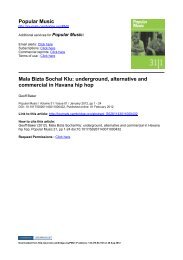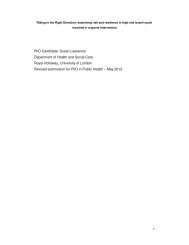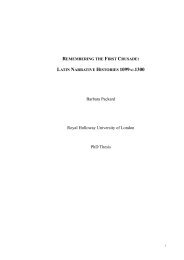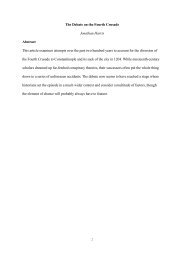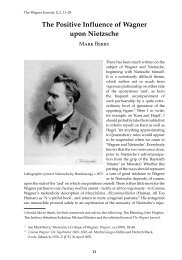Dynamic Capabilities: A Review and Research Agenda
Dynamic Capabilities: A Review and Research Agenda
Dynamic Capabilities: A Review and Research Agenda
You also want an ePaper? Increase the reach of your titles
YUMPU automatically turns print PDFs into web optimized ePapers that Google loves.
Ahmed 2004). We reckon that these multi-dimensions are important in measuring the<br />
overall innovative capability as a component factor of the dynamic capabilities<br />
construct.<br />
Conceptually, we reckon that adaptive capability, absorptive capability <strong>and</strong><br />
innovative capability are the most important component factors of dynamic capabilities<br />
<strong>and</strong> underpin a firm’s ability to integrate, reconfigure, renew <strong>and</strong> recreate its resources<br />
<strong>and</strong> capabilities in line with external changes. The three factors are correlated, but<br />
conceptually distinct. Each has a particular emphasis: adaptive capability stresses a<br />
firm’s ability to adapt itself in a timely fashion through flexibility of resources <strong>and</strong><br />
aligning resources <strong>and</strong> capabilities with environmental changes. Hence, the focus of<br />
adaptive capability is to align internal organisational factors with external<br />
environmental factors. Absorptive capability highlights the importance of intaking<br />
external knowledge, combining it with internal knowledge <strong>and</strong> absorbing it for internal<br />
use. Innovative capability effectively links a firm’s inherent innovativeness to<br />
marketplace-based advantage in terms of new products <strong>and</strong>/or markets. Thus,<br />
innovative capability explains the linkages between a firm’s resources <strong>and</strong> capabilities<br />
with its product-market. Existing empirical studies of dynamic capabilities, primarily<br />
based on qualitative case studies, have found that the three component factors are<br />
indeed common across several industries as discussed above, although firms may<br />
develop their dynamic capabilities from their unique starting points <strong>and</strong> through their<br />
unique paths (Cockburn et al. 2000; Eisenhardt <strong>and</strong> Martin 2000; Mota <strong>and</strong> de Castro<br />
2005).<br />
18






